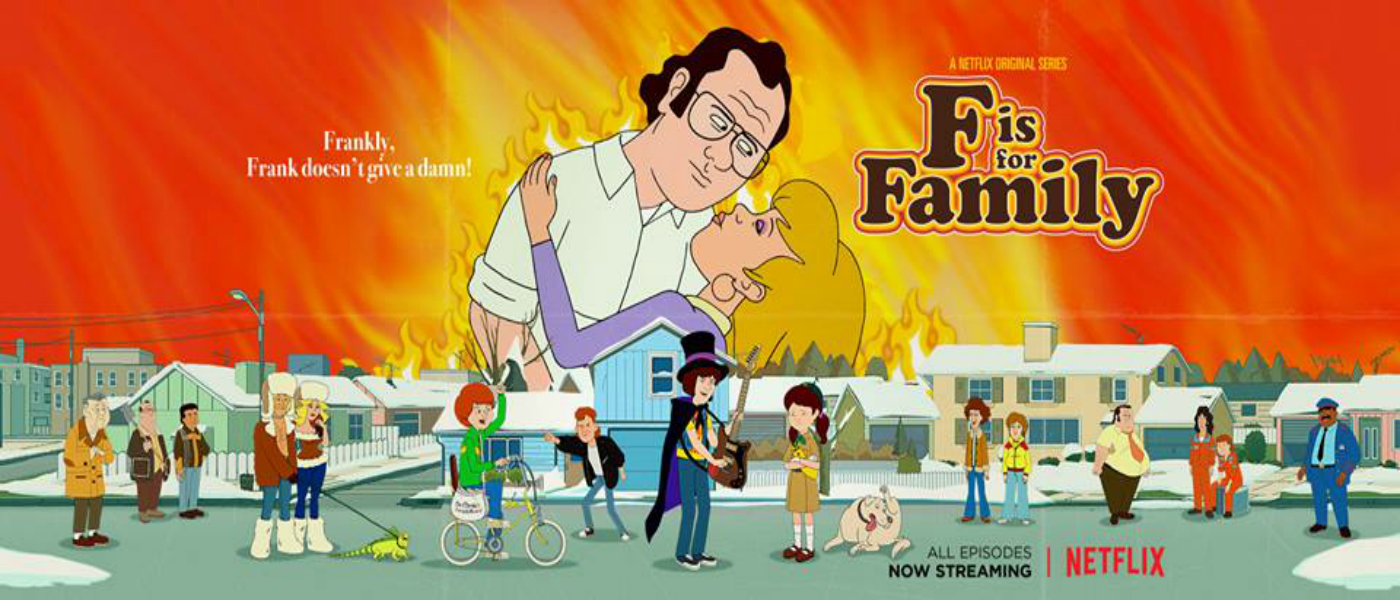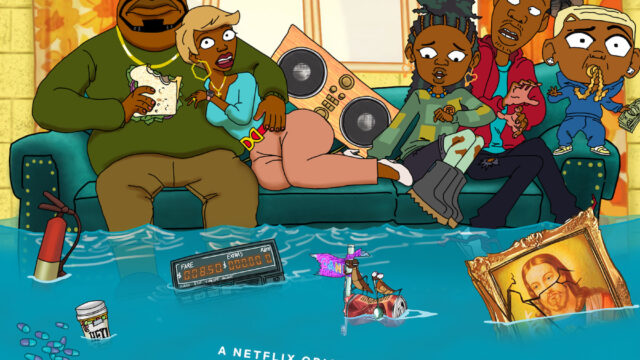Season Review: “F is for Family” Season Two
The series makes a strong return as the family falls apart.
Spoilers Below
What’s the difference in F is for Family and every other family sitcom with a grumpy dad and reliance on gender roles? F is for Family is going to go there. This show did the hard work it needed to do in season one so a second season would really be worth it. While it ultimately paid off, season one could be a struggle to watch. The main character and Murphy family patriarch, Frank, is abrasive to the point of offense, especially to modern ears. At first, the show simply looked like a vehicle to show how racist and sexist the 70s were. But in its first six episodes, F is for Family morphed into one of the deepest explorations of social and emotional traumas that a comedy has ever seen. Based on that groundwork, season two is free to dig into the Murphy family. Emotional suppression may have been a sign of the times, but the damage it does runs deep.
The season starts in 1958 and will return here a few times. These flashbacks to Frank’s time in the military and Sue’s time in college attempt to answer the question: How did things get to this? After being fired from his airline job on Christmas Eve, Frank is wallowing in the loss of a paycheck and an identity. When Sue turns her Plast-A-Ware “hobby” into a full-time career to carry the family, Frank can’t handle the loss of leadership. He makes up for it by tightening his authoritative grip on his three children and his wife.
The Murphys were already in a precarious position when it came to relationships, but Frank’s added anger pushes the family to its breaking point. Older son Kevin finds himself needing support multiple times, so much that he actually approaches his father for it. In his selfish blindness, Frank pushes Kevin away, potentially toward even more destructive behaviors. Meanwhile, Bill’s isolation causes him to take on the primary family trait. His descent into rage and immorality is a significant leap from his prior young, kindhearted nature. At least his dad won’t call him a “pussy” anymore.
Daughter Maureen has always had an evil streak. Although, for being the princess of the family, Frank is eager to shoot down her dreams. She’s a girl, she can’t be an astronaut, or a programmer, or a pirate. She’s also the catalyst for Frank and Sue’s emotional breakthrough. After a fervent, accusatory fight during a parent-teacher conference, the two finally agree to work on their marriage. (Frank also allows Maureen to join Computer Club.)
At this point, F is for Family starts to answer a few more questions: Will this marriage survive? or Why does Sue stay with Frank, anyway? As for Sue, there are a few reasons. One is that because after all the lying, stealing, and betrayal, Sue still doesn’t have a clear answer as to why Frank is acting this way. Another is that it’s the 70s, and as Maureen says, “Daddy told me we’re too poor for you guys to get divorced”.
As Sue’s life proves, this was often a tough time for women, both at home and in the workplace. The prevailing sentiment is explicit (in multiple ways): women are inferior. It’s the reason why she’s reduced to a body at her secretarial job. It also turns out, to be Frank’s main motivator in dismantling their marriage.
Looking back to 1958, Frank and Sue can remember exactly why they got married. An unplanned pregnancy may have spurred the event, but they went into it willingly. They were in love. What turned out to be empty promises of finishing college and entering flight school tinged their union with anger and regret. At Father Pinkie’s couples retreat, Frank finally opens up to the truth. Overworked and underemployed, Frank is jealous of Sue’s success. He’s the man, he’s the one who’s supposed to take care of things, and because of that, he wants Sue to fail. It’s an unprecedented emotional breakthrough. But it doesn’t mean their relationship is fixed.
Sue’s right to be outraged. Frank’s only concrete complaint against her is her nagging, which, as a viewer, hasn’t been seen. She’s kept the family together with an only a tenth of the corrosion that Frank caused. The show clawed its way to bring the characters so far. At this point, it relies on some outside storytelling to bring them all the way through.
Frank is caught up in a scheme to get his old job back at the airline. Just as they’re shipping off his replacement, an unknown guard appears. This is a terrorist attack. Held hostage, Frank admits his wrongdoings and resolute love for Sue. She listens and watches from the sidelines, and forgives him through her fear. The two reunite, strengthened in love, to the backdrop of a graphic massacre.
In contrast, just scenes earlier, side character Vic endured a violent climax of his own. After spending the season increasing his habitual drug use, the former hippie radio DJ found out about his girlfriend’s infidelity at their anniversary party. He had driven her away with his arrogance and probably his addiction to cocaine. All these traits originated as jokes, but they culminate with Vic shooting up his own house. This is physical, violent danger that doesn’t feel cartoonish or over the top – it feels very real. In this case, it’s a logical step that provides a visceral conclusion to the next door neighbor’s pain.
The bloody mess at the airport could also symbolize the depth of the wounds Frank and Sue endured in order to reconcile. But after such a realistic portrayal of what it can take to save a relationship, they deserved a conclusion that did the same. Without the threat of death, it’s likely that their marriage would not have recovered.
All main characters are safe, but the kids didn’t exactly escape this unharmed. Ever since Kevin nearly drowned as a baby and went two minutes without oxygen, it seems like the Murphys’ parenting style has done some damage. It would be interesting to see if, in future episodes, the kids get any emotional reprieve of their own.
This is heavy stuff, so it’s even more shocking that it’s funny, too. The show has to operate on several levels. It takes a cautious hand to critically portray the prejudices of the times without perpetuating them, and allow for laughter on the subject.
It’s this discerning historical approach that answers the initial question: How did things get to this? Not just the journey in Frank and Sue’s marriage, but from 1958 to 1974 to 2017. Yes, the 70s were racist and sexist, but that’s been pointed out before. F is for Family will point it out again. And it will do so much more than that.
SCORE



























Hi Ashley, thank you so much for reading and we love the feedback. Note that on that day we had 14th posts go up and only ten posts show on the front page, so it's possible the preview had already been archived by the time you got to it. One recommendation would be to add our RSS feed to your favorite news aggregator service like Feedly, this way you get all of the latest posts!